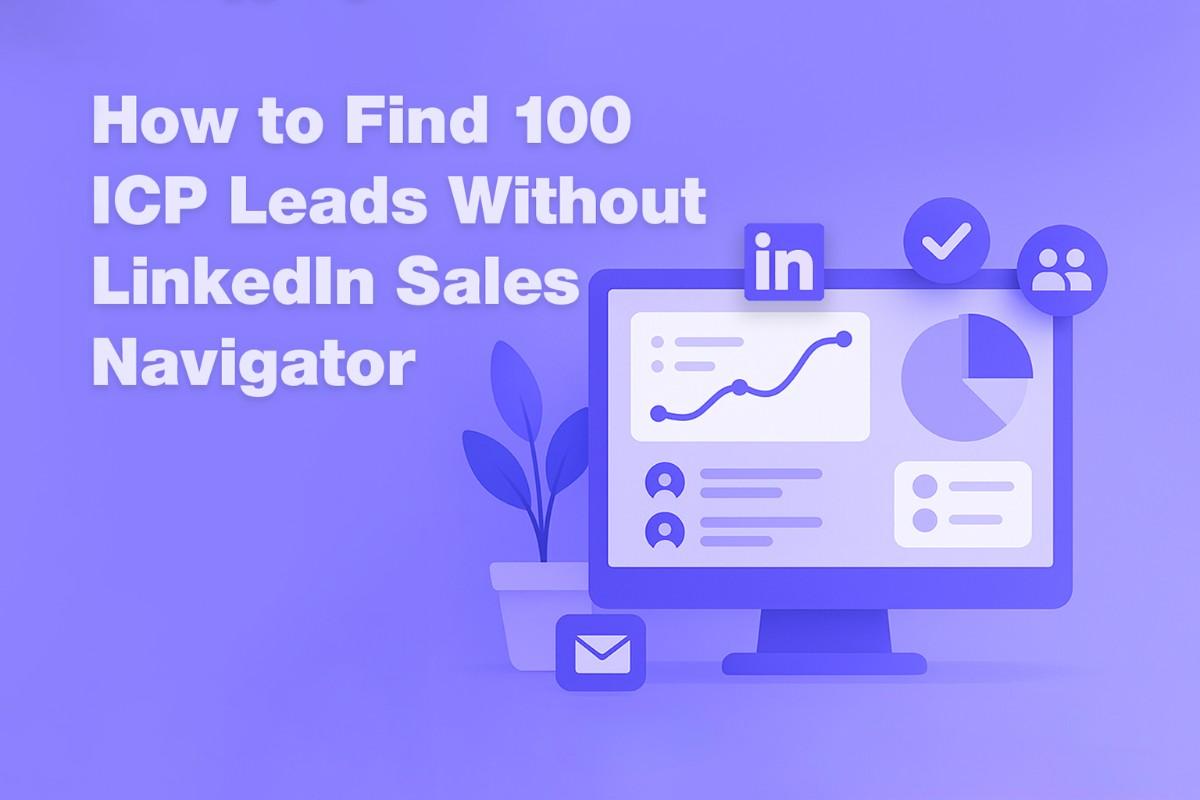Table of content
Case Study: How Automation Transformed Our Lead Generation Process
In a fast-growing digital world, lead generation plays an integral part in a booming business. Without the proper flow of potential customers, even the most unique products or services could fail. However, the challenge lies in how lead generation could be carried out effectively and to scale. Basic manual methods, while they serve the purpose, often prove cumbersome and resource-intensive as the business expands. This is where automation comes in handy. We are going to discuss in this case study how automation has transformed our lead generation process, bringing in a drastic change in efficiency, accuracy, and consequential revenue generated by the process. Let us explain this change through one very real example.
Challenges in Manual Lead Generation
But before diving directly into the automation process, some context needs to be provided to outline the problems with our previous manual process for generating leads. Most businesses, ours included, put a big emphasis on a highly manual approach to generating leads. This entailed marketers, in conjunction with salespeople, scanning the internet for potential leads, listing them, and then sending follow-up emails or calling them. Responses were tracked in spreadsheets.
1. Time-Consuming: Much time was required to find, verify, and then contact every lead. It was the rate of hours per lead that led to less productivity.
2. Inconsistency: This used to have frequent human errors, thus leading to inconsistent data entry, follow-up, and tracking. It was very hard to foster leads through the sales funnel since there was inconsistency.
3. Scalability Issues: As our business grew, so too did the instability of the manual process. Scaling up the process would mean having to hire more individuals, which proved to be quite expensive and inefficient.
4. Limited Reach: The ability of the manual process to let us reach a greater audience was constrained. Sometimes, it was limited to only certain respective sectors or industries that our team knew about, hence further delimiting the reach to the market.
5. Delayed Response: Often-times, the manual process leads to failure in responding promptly to potential leads. Most of the time, delays mean lost opportunities, since prospects are switching to the competition that responds faster.
The Solution : Automation in Lead Generation
Automating our lead generation was not a lightly reached decision. It called for design, planning, investment in the right tools, and the alteration of our overall strategy. However, the potential benefits could well outweigh the risks.
Components of Our Automation Strategy
1. Automated Lead Identification and Data Collection
The first on the list was to automate identification of potential leads and the collection of their data. We then implemented tools that are capable of scraping data from a wide variety of sources, including social media platforms, industry directories, and company websites. Such tools would be to identify potential leads against some standard, maybe industry, job title, and location.
Example: We implemented something which helps to extract the data from LinkedIn profiles automatically. Suppose we have indicated the search criteria, such as "marketing directors in the technology sector within the United States," then this tool will generate a list of potential leads. This automated process saved hundreds of hours which otherwise would have been spent finding and verifying leads manually.
2. Lead Scoring and Segmentation
First, we had to go through that list of potential leads to narrow them down. Not all leads are equal, so it became very necessary to separate the leads that were most probably going to convert into customers out. We put in place a lead scoring system that makes sure that a score is attached to each of the leads, automatically, according to the factors constituting company size, revenue, engagement level, and earlier interactions with our content or brand.
For example: A lead coming from a big company, which engages in white paper content download or attends a webinar, will score higher than a small startup that hardly interacts. Thereafter, the automated system categorizes these leads according to high, medium, and low priorities. This thus enabled our sales team to direct their focus on the most potential leads.
3. Automated Outreach and Follow-Up
The outreach and further follow-up were almost or equally important as automation in terms of providing our process with the desperately needed momentum. We established an automated emailing platform to permit tailoring messaging flows to the segmented lead. Messaging flows include the strategy followed in the sequencing of emails along with the follow-ups. This means that emails, according to different situations of triggers defined, are inducted in the system, where they are launched and sent once a lead visits our website or downloads any resource.
Example: For high-priority leads, the system will trigger an introductory email that offers to set up a free consultation. If lack of email response occurs within a couple of days, a follow-up email will be triggered with other resources and options for scheduling a consultation. We did not lose any leads due to this automated follow-up process, and accordingly, we experienced a great increase in our response rates.
4. CRM Integration and Automation
Everything that our customer relationship management system does is integrated into the flow of work effortlessly: lead-generation tools that are so integrated automatically update potential leads with all their information from the interaction tracking, statuses of cases, and monitoring the course that potential leads take in the sales funnel.
Example: Updating automatically the status of a lead in the CRM the moment they answer an email, and therefore triggering the next step in the sales process. The sales team would receive a notification; all details regarding lead, note with their previous interactions, and their previous touch-points would be at their fingertips. This saved time through the elimination of manual data entry and ensured our team operated from a central point of information.
5. Automated Insights and Reporting
Lastly, the automated analytics and associated reporting tools in place provided us with real-time insights into our lead funnelling efforts. Key performance indicators include conversion of leads, email open rates, click-through rates, among others.
Example: Weekly reports highlighted the best-performing lead sources, email campaigns, and sales strategies. Thus, we kept further refining the method and gained opportunities to decide with the help of data what exactly could help to get more and better leads.
Results: How Lead Generation Improved Tremendously because of Automation
Applying automation to the lead generation process led directly to the creation of landmark changes in terms of average output. Below are some of the critical results.
1. Improved Efficiency and Productivity
Automation helped cut down the time taken for manual tasks related to lead generation. The identification of possible leads and the collection of data, which earlier might have consumed hours of time, can now be done within a short period. This efficiency led our team to indulge in more strategic activities, say devising personalized sales pitches, and nurturing leads that are high in priority.
2. Improved Quality of Leads and Conversions
The automated lead scoring with segmentation system ensured that our sales force focused on the most promising leads. This program of targeted approaches to each segment of leads make us more specific in our outreach to address the needs and interests of our clients, resulting in higher conversion rates.
Example: A high priority, conversion of a 30% improvement in rate. That means that the revenue we take in on sales can be maximised by the sales force with improved targeted attention.
3. Scalability
So, automation made this process of lead generation we run super scalable. We later easily scaled up our lead generation efforts without much fuss over new personnel as our business grew. The tools we use are equally capable of managing huge volumes of data and outreach, allowing us to reach a very wide audience at any given point without any compromise on quality.
Example: The automation allowed us to expand our reach for lead generation to global markets. We could then locate and reach potential leads in new locations, which expanded our customer list and scaled by 25% within a year.
4. Consistent Follow-Up and Engagement
An automated follow-up system assured no lead was lost—a timely, relevant follow-up to each of them increased engagement and kept the brand top of mind. It's consistency like this that helps keep leads progressing to the next stage and developing long-term relationships.
Example: Our email open rates increased by 20% as we engaged with customizable, automated follow-up sequences. Easier content engagement for leads, who have a higher tendency to click on the email because its content was inclined to their specific interests and needs.
5. Better Data Accuracy and Reporting
This enabled direct integration with our CRM system, creating a real-time and accurate database of lead information. So the correctness of the data is key; thus, we are able to make the right decisions and efficiently optimize the strategy of generating leads to the best. It also makes it easy for the automated reporting software to see exactly how we're doing and make all sorts of suggestions on how to improve.
Example: The automated reporting system indicated that one industry segment was doing poorly. This allowed us to change up our strategy and refocus resources to more promising areas which led to a 15% increase in leads from those areas.
Conclusion: Lessons Learned by Our Journey with Automation
Automating this process has not been without its challenges, but the results are visible and continue to speak for themselves. Automation has completely changed our lead-generation process into results with an increase in efficiency, conversion rates, and phenomenal business growth. But the secret for perfect automation lies in planning well, choice of the right tools, and consistency in optimization.
Key Takeaways
1. Start with a Clear Strategy: Implementing automation should be done after you have fully understood your lead generation desires, coupled with the exact challenges you are targeting with it. This forms the guide for any further tool choices and ensures that any automation effort is within the overall business strategy.
2. Choose the Right Automation Tools: Not all automation tools are created equal. It is, therefore, important to choose the one that suits the need defined at the moment and will get along with the working system at hand. Make a point to check out the options in advance.
3. Ensure Quality over Quantity: With the help of automation tools, your lead volumes can become really huge. Never compromise quality for quantity. Lead scoring and segmentation can help you concentrate your energy on leads with the highest potential, thus increasing your conversion rate.
4. Keep On Optimizing: This means that automation cannot remain a 'set it and forget it' solution. Look at the data and insights of your processes—constantly optimize them. Keep an eye on your performance metrics often and make tweaks wherever it needs improvement to ensure your lead generation efforts continue to be effective.
5. Human Touch Still Matters: Even if automation takes much of the job in lead generation, human touch still is necessary in terms of building connections and closing the sale. Automate everything repetitive and typical so that your team can then focus on functions that are more important and that require more interaction and engagement.
Final Thoughts
Automation can then work the magic of revolutionizing lead generation, making it much more efficient, scalable, and productive. In other words, with proper automation strategies and well-matched tools, this helps businesses break free from the engagement problems that hurdle manual lead generation and realize new opportunities for growth. If planned and implemented well, automation can make the experience with lead generation a powerful driver of success.
Get your next meeting in a
matter of minutes.
Free Trial
Latest
The Ultimate LinkedIn Outreach Playbook 2025
A practical, modern guide to mastering LinkedIn outreach in 2025 — learn how to boost reply rates, p
12/1/2025How to Find 100 ICP Leads Without LinkedIn Sales Navigator
Generating 100 targeted ICP leads doesn’t require LinkedIn Sales Navigator. Learn how to leverage fr
11/28/2025


